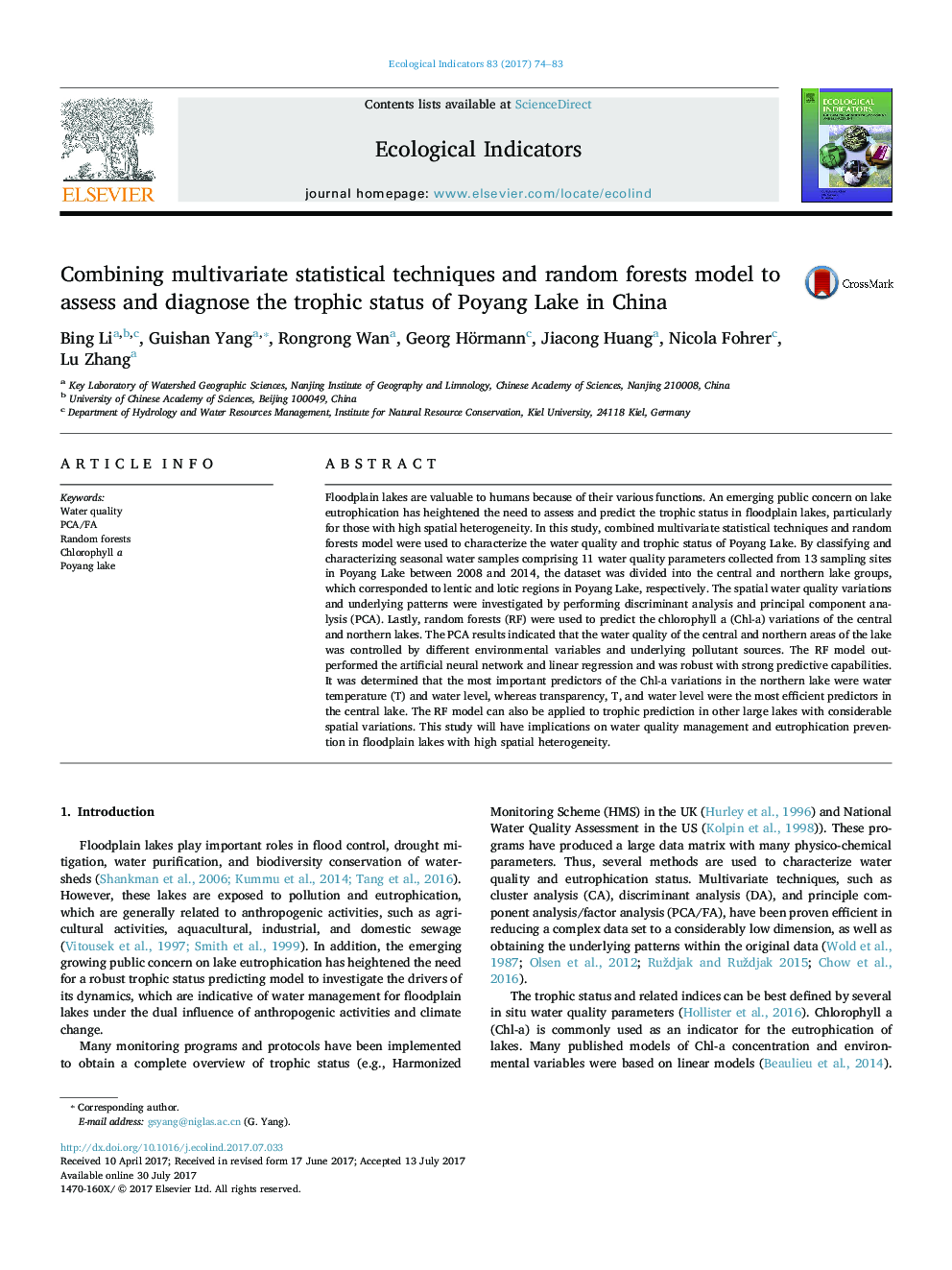| کد مقاله | کد نشریه | سال انتشار | مقاله انگلیسی | نسخه تمام متن |
|---|---|---|---|---|
| 5741479 | 1617119 | 2017 | 10 صفحه PDF | دانلود رایگان |

- Poyang Lake was classified into northern lake (lotic region) and central lake (lentic region) according to water quality similarities.
- Hydrological indicator should be included in Chl-a prediction in floodplain lakes.
- Random forests can be used for modeling Chl-a dynamics of floodplain lakes with high spatial heterogeneity.
- Temperature, transparency and water level are predominant predictors explaining Chl-a dynamics in Poyang Lake.
Floodplain lakes are valuable to humans because of their various functions. An emerging public concern on lake eutrophication has heightened the need to assess and predict the trophic status in floodplain lakes, particularly for those with high spatial heterogeneity. In this study, combined multivariate statistical techniques and random forests model were used to characterize the water quality and trophic status of Poyang Lake. By classifying and characterizing seasonal water samples comprising 11 water quality parameters collected from 13 sampling sites in Poyang Lake between 2008 and 2014, the dataset was divided into the central and northern lake groups, which corresponded to lentic and lotic regions in Poyang Lake, respectively. The spatial water quality variations and underlying patterns were investigated by performing discriminant analysis and principal component analysis (PCA). Lastly, random forests (RF) were used to predict the chlorophyll a (Chl-a) variations of the central and northern lakes. The PCA results indicated that the water quality of the central and northern areas of the lake was controlled by different environmental variables and underlying pollutant sources. The RF model outperformed the artificial neural network and linear regression and was robust with strong predictive capabilities. It was determined that the most important predictors of the Chl-a variations in the northern lake were water temperature (T) and water level, whereas transparency, T, and water level were the most efficient predictors in the central lake. The RF model can also be applied to trophic prediction in other large lakes with considerable spatial variations. This study will have implications on water quality management and eutrophication prevention in floodplain lakes with high spatial heterogeneity.
Journal: Ecological Indicators - Volume 83, December 2017, Pages 74-83